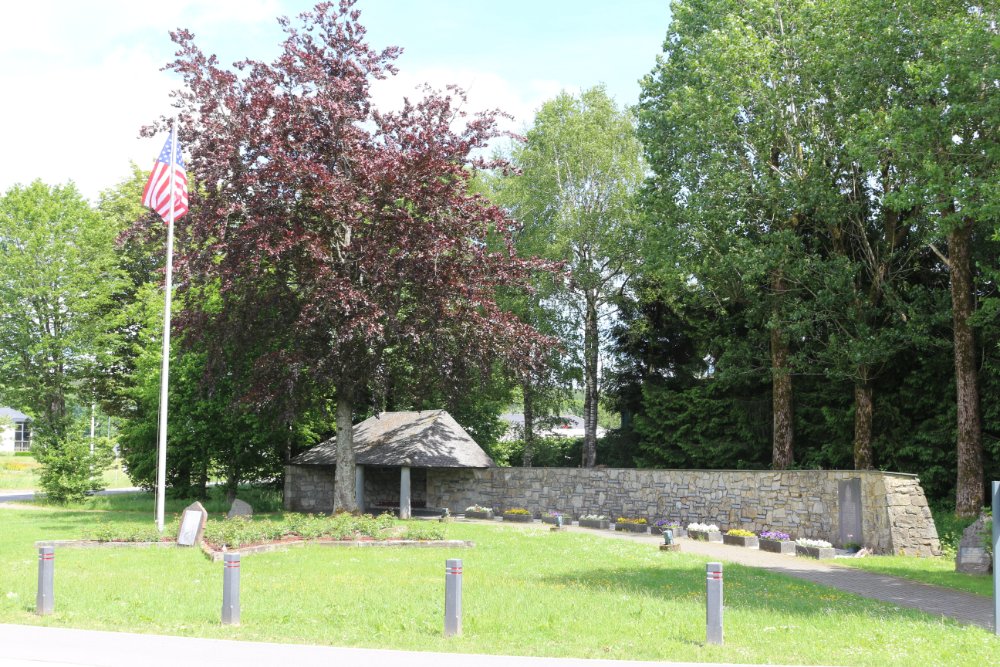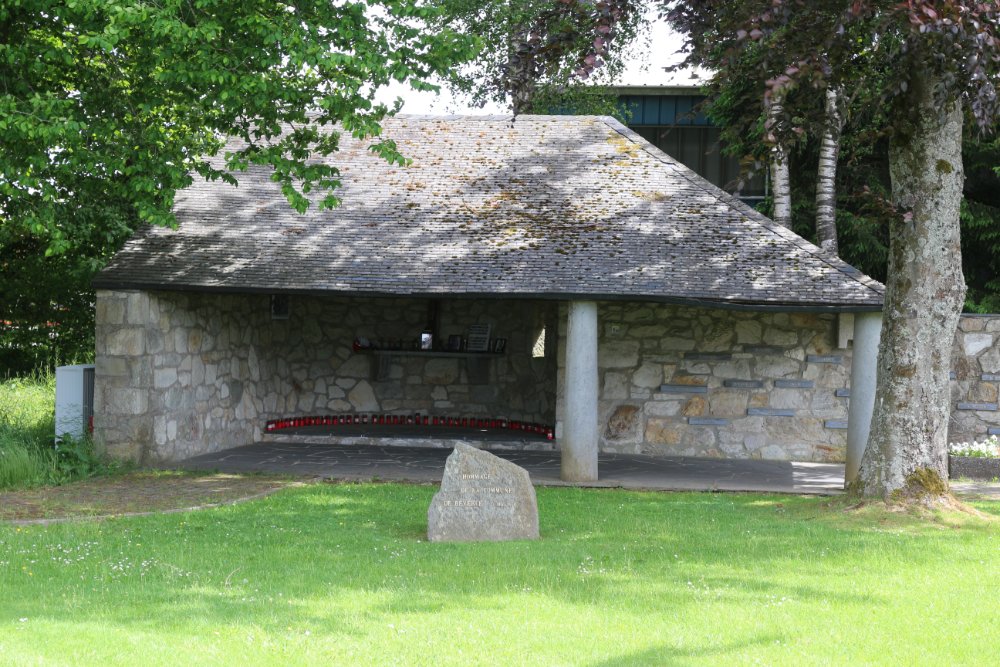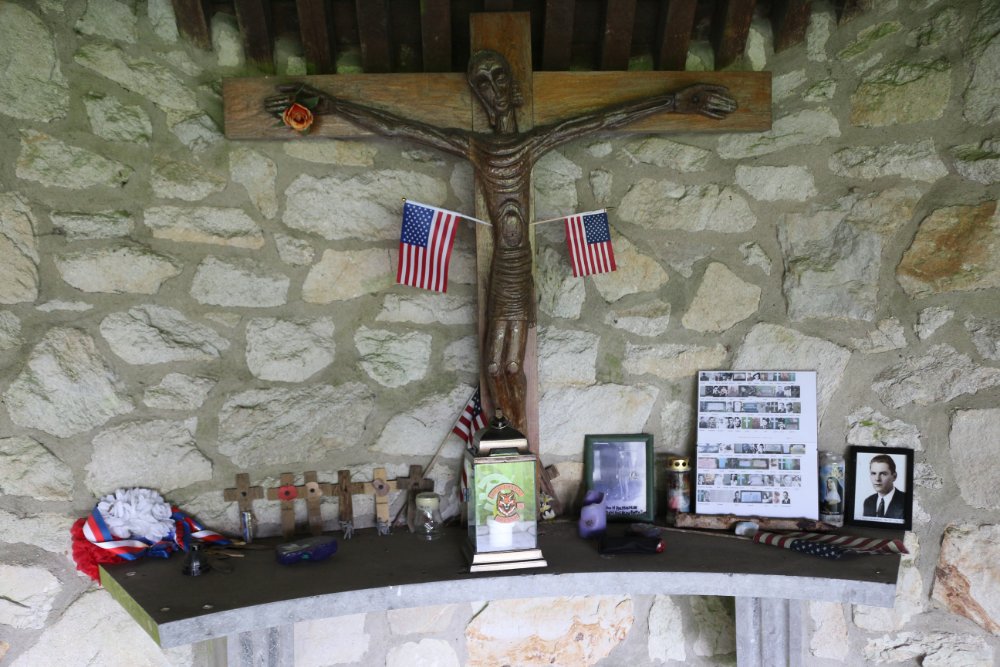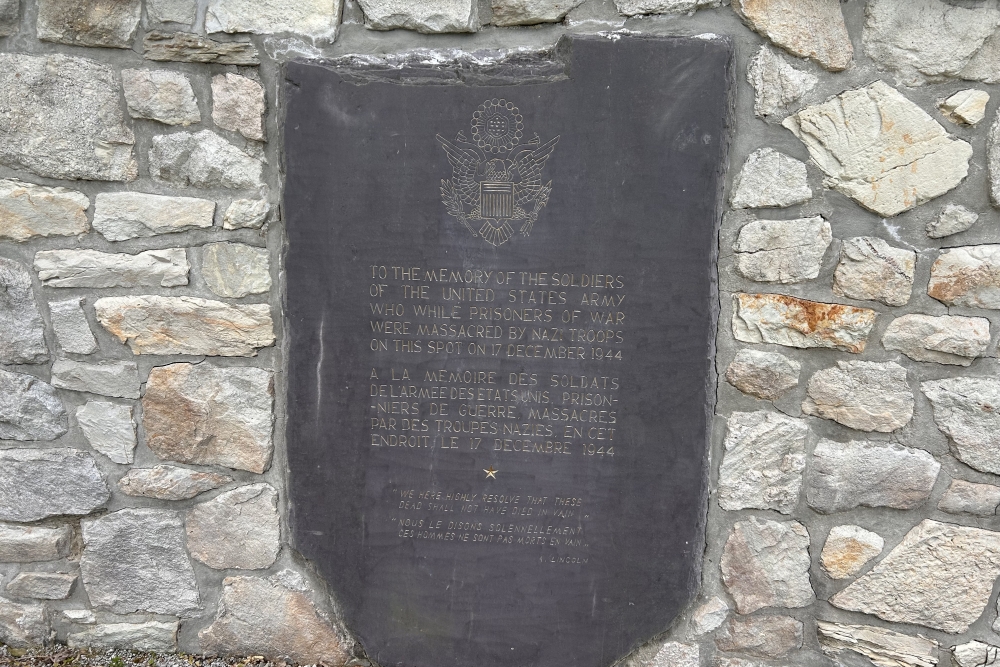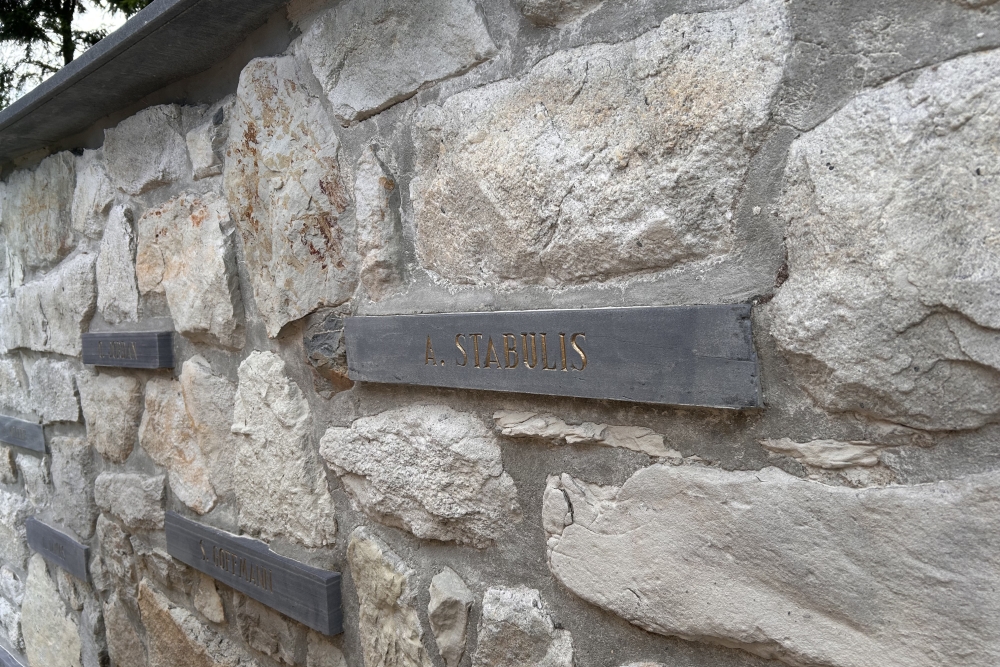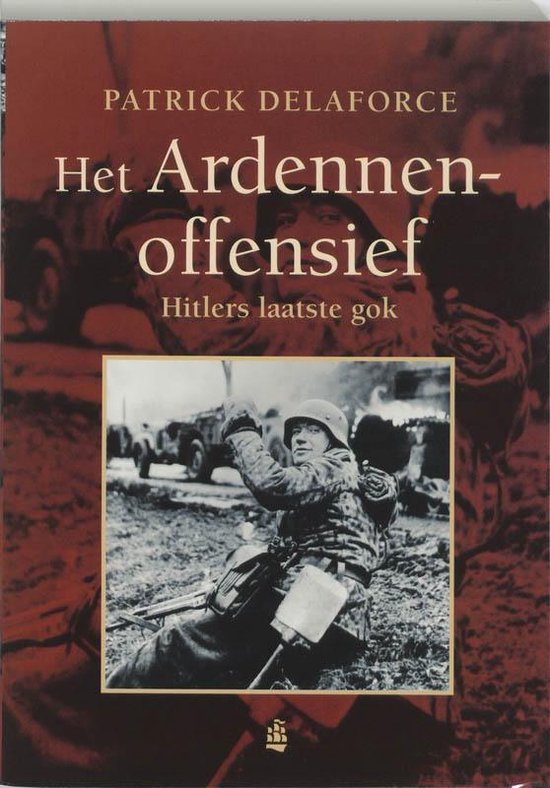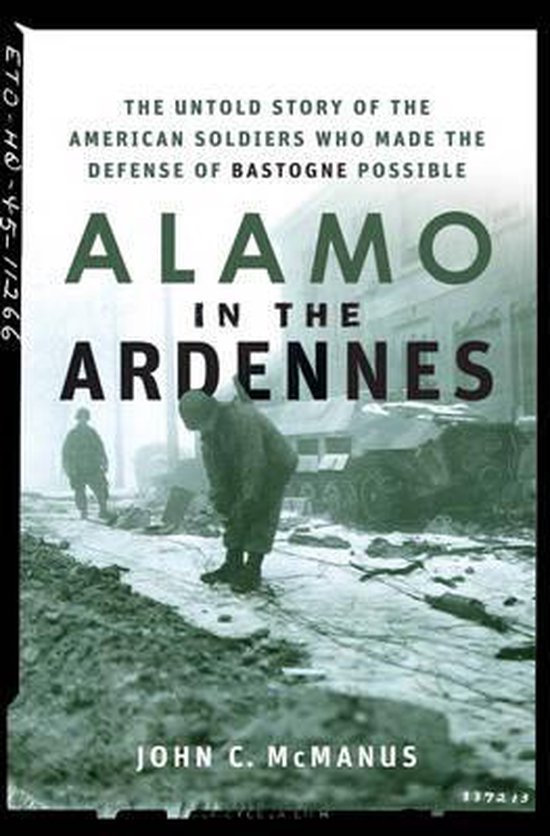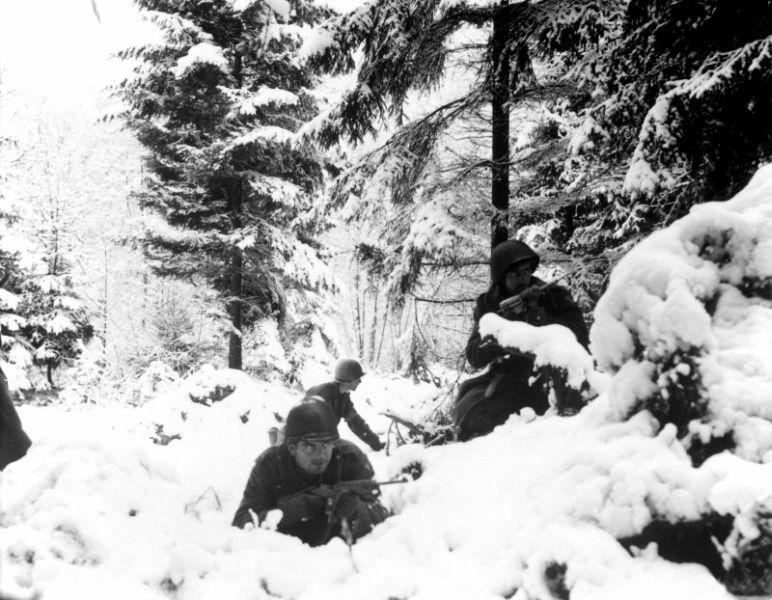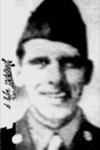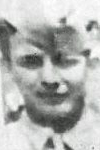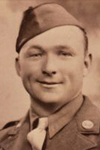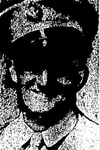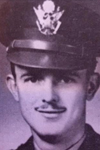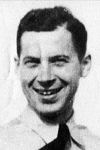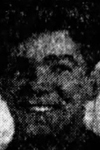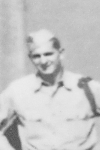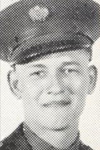Memorial murdered American prisoners of war Baugnez
This memorial commemorates the 84 American soldiers who lost their lives here in the winter at december 17, 1944, in what would be known as 'the Malmedy Massacre'. It would be a turningpoint in the war for the Americans.
The youngest PFC John KLUKLAVY was 19, the oldest T-Sergeant William Mc GOVERN 39. T5 Charles HAINES died here on his 22nd birthday. Private John COBBLER died on Dec. 18 at a first aid station at Malmedy. He had managed to escape to Malmedy wounded but died of his injuries.
The body of Private Elwood THOMAS, 285th FAOB, was never recovered. He was officially declared dead after the war.
The body of Private Louis VAIRO, 285th FAOB, was later recovered in Neuhof (Germany) 18 km from Baugnez. His name is not included on the memorial.
Seven captured soldiers had to transport the remaining American vehicles to Ligneuville. Except for T5 David LUCAS, 285th FAOB, who died in 1945, the six others survived the war in captivity.
Most of the soldiers were murdered in cold blood on December 17, 1944, by the vanguard of “Kampfgruppe Peiper” that was on its way to Flémalle on the Meuse River near Liège.
This Kampfgruppe was named after its commander; Obersturmbannführer Jochen Peiper of the 1st SS Panzer Regiment “Leibstandarte Adolf Hitler” (LSSAH). It was one of the 5 so-called “Rollbahnen” of the Ardennes Offensive. His Kampfgruppe consisted of
1st SS Panzer Battalion
3rd battalion of the 2nd SS Panzergrenadierregiment
SS Panzerabteiling 501
1st SS Panzergrenadier battalion
3rd SS Panzer Battalion
84th FLAK-Luftwaffe Battalion
This kamfgruppe had already murdered in cold blood a number of captured American soldiers earlier that day when they arrived around 6.00 houres at Honsveld.
On Dec. 17, 1944, the US 285th Field Observation Artillery Battalion was en route from Malmedy to Sankt-Vith (B). In Sankt-Vith, they had to determine the positions of German artillery and relay them to headquarters. Although they knew the Germans had launched a counteroffensive, they were taken completely by surprise by the sheer numbers and firepower of Kampfgruppe Peiper's vanguard.
The vanguard eliminated the Americans in a short battle and forced them to surrender. The remaining soldiers were herded together in the meadow diagonally opposite this memorial.
Because the order from the commanders of the Ardennes Offensive was to advance as quickly as possible according to a predetermined timetable to the Meuse River and then to the ports of Antwerp, verbal ! orders had been given in advance that no prisoners of war would be taken. There was no time and manpower available to guard, feed and care for the prisoners of war. Everything was in the service of getting to the Meuse as quickly as possible.
In addition, it should not be underestimated that the SS troops deployed were hardened in combat on the Eastern Front. The SS had already become notorious there for their ruthless fighting. Also, the fact that Germany was increasingly cornered and German cities, and thus their own families, suffered under constant bombing, meant that the SS men fought doggedly to keep Germany from defeat.
Even at the Dachau trials where part of the Kamfgruppe Peiper was on trial, including Jochen Peiper himself, it remained unclear who ultimately gave the command to shoot the POWs. At the Nuremberg trials where Peiper, among others, was tried, this was never clarified. At some point, fire was opened from tanks and tracked vehicles. Even passing soldiers seated in vehicles opened fire on the soldiers in the field. After the firing stopped, SS soldiers walked past the fallen American soldiers, and those still alive were murdered in cold blood, with a shot through the head. They pretended to come to help the wounded soldiers, but wherever a soldier raised his voice, he was shot through the head.
In the end, 50 soldiers knew whether or not they were wounded from the massacre, the became known as the “Malmedy Masacre.” They managed to reach the small town of Malmedy and tell what had happened to them. Ore reached their own lines after days. This moment was a turning point in the attitude of American forces in the war against Germany and in particular the SS.
Private Delbert JOHNSON standing on the monument was killed during the liberation of Baugnez on Jan. 3, 1945.
Died as a result of the December 17, 1944 massacre
BLOOM Donald L., age 21, private with the 285th Field Artillery Observation Battalion (FAOB), reburied in the U.S. after the war, shot through the head.
BLOUCH Carl H., age 21, T5 with the 285th FAOB, reburied in the U.S. after the war, died in the field of wounds.
BREON Charles R., age 22, T5 with the 285th FAOB, reburied in the U.S. after the war, died from a blow to the head.
BROZOWSKI Joseph A., age 25, corporal T5 with the 285th FAOB, buried at Henri-Chapelle (B) grav C-8-38, shot through the head.
BURKETT, Samuel P., age 22, T5 with the 285th FAOB, reburied in the U.S. after the war, shot through the head.
BURNEY L., age 21, PFC with the 32nd Regiment of 3rd Armoured Division, reburied in the U.S. after the war, shot through the head. This soldier was not part of the 285th FAOB, but was en route with his jeep and happened to be in the column of the FAOB.
CARR Paul R., age 31, T5 with the 285th FAOB, buried at Henri-Chapelle (B) grave D-8-28, died of wounds in the field.
CARSON Homer S., age 22, private first class with the 285th FAOB, reburied in the U.S. after the war, shot through the head.
CASH Cecile J., age 22, T4 with the 197th Anti Aircraft Artillery Battalion, reburied after the war in the U.S., shot in the head. This happened 200 meters east of this spot just before the massacre. T4 Cash, along with T5 Heitmann, was traveling in a jeep just ahead of the column of the 285th FAOB, going straight at the junction and first encountering the vanguard of Kampfgruppe Peiper.
CLARK Frederick, age 28, private first class with the 285th FAOB, reburied in the U.S. after the war, died of concussion.
CLYMIRE John J., age 25, private first class with the 86th Engineers Battalion (Heavy Pontoon), buried at Henri-Chapelle (B) grave D-11-58, killed by shellfire.
COATES James H., age 22, private with the 285th FAOB, reburied in the U.S. after the war, died by rifle fire.
COBBLER John H., age 22, private with the 285th FAOB, buried at Henri-Chapelle (B) grave A-18-43, managed to escape wounded and died of his gunfire wounds in a first-aid station at Malmedy on Dec. 18, 1944.
COHEN Robert, age 22, private first class with the 285th FAOB, reburied in the U.S. after the war, shot through the head.
COLLIER John D., age 26, T5 with the 285th FAOB, reburied after the war in the U.S., shot through the head.
DAVIDSON Paul G., age 21, technical-Sgt with the 285th FAOB, reburied after the war in the U.S., shot through the head.
DAVIS Warren, age 22, private first class with the 285th FAOB, buried at Henri-Chapelle (B) grave C-10-59, killed by shellfire.
DESCH Howard C., age 21private first class with the 285th FAOB, reburied in the U.S. after the war, shot through the head.
DUNBAR William J., age 20, private with the 285th FAOB, reburied after the war in the U.S., shot through the head.
FITT Carl B., age 21, corporal with the 285th FAOB, reburied after the war in the U.S., shot through the head.
FLACK Donald P., age 21, private first class with the 285th FAOB, reburied after the war in the U.S., shot through the head.
FRANZ Walter A., age 25, sergeant with the 285th FAOB, reburied in the U.S. after the war, died as a result of light weapons, shot from military vehicles during surrender.
FREY Carl B., age 21, private first class with the 285th FAOB, reburied in the U.S. after the war, shot through the head.
GEISLER Donald E., age 22, staff sergeant with the 197th Anti Aircraft Artilley-Bataljon, reburied in the U.S. after the war, shot through the head.
GENTHENER Carl R., age 33, 1st lieutenant with the 575th Ambulance Company, 341st Medical Group, buried at Henri-Chapelle (B)grave C-13-3, shot through the head. A small group of vehicles from the 575th Abulance Company rode behind the column of the 285th FAOB and became fellow casualties.
GOFFMANN Solomon S., age 27, 2nd lieutenant with the 285th FAOB, reburied in the U.S. after the war, died as a result of light weapons, shot during surrender from military vehicles.
HAINES Charles F., age 22, T5 with the 285th FAOB, reburied in the U.S. after the war, killed by shell fire on his 22nd birthday!
HALL Charles E., age 22, private first class with the 285th FAOB, reburied in the U.S. after the war, run over by German armored cars.
HALLMAN Samuel A.,age 21, private with the 285th FAOB, reburied in the U.S. after the war, died as a result of light weapons, shot down from military vehicles during surrender.
HEITMANN Raymond A., age 22, T5 with the 197th Anti Aircraft Artillery Battalion, buried at Henri-Chapelle (B) grave D-6-19, died as a result of light weapons during the battle on December 17, 1944, this happened 200 meters east of this spot just before the massacre. T5 Heitmann was traveling in a jeep with T4 Cash just ahead of the column of the 285th FAOB, going straight ahead at the junction and first encountering the vanguard of Kampfgruppe Peiper.
HERCHELROTH Sylvester, age 21, T4 with the 285th FAOB, reburied in the U.S. after the war, shot in the head.
IAMES Lloyd A., age 23, 2nd lieutenant with the 32nd regiment of 3rd Armoured Division, buried at Henri-Chapelle (B) grave D-6-36, shot in the head
INDELICATO Ralph J., age 23, corporal with the Head Quaters Battery of the 285th FAOB, reburied in the U.S. after the war, shot in the head.
JOHNSON Delbert J., age 22, private with the 526th Armoured Infantry Battalion, killed during the recapture of Baugnez on January 3, 1945, buried at Henri-Chapelle (B) grave D-9-32.
JONES Wilson M. Jr., age 21, T5 with the 285th FAOB, buried at Neuville-en-Condroz (B) grave A-32-39, died as a result of small arms, shot during surrender from military vehicles, 3 days before his 22nd birthday.
JORDAN Oscar, age 22, T4 with the 285th FAOB, reburied in the U.S. after the war, died as a result of light weapons, shot during surrender from military vehicles.
KINSMAN Alfred W., age 25, sergeant with the 285th FAOB, buried at Henri-Chapelle (B) grave D-7-41, cause of death unknown.
`
KUKLAVY John, age 19 !, private first class with the 32nd Infantry Regiment of the 3rd Armoured Division, buried at Henri-Chapelle (B) grave D-15-46, bled to death.
LAUFER Howard C., age 26, T5 with the 285th FAOB, reburied in the U.S. after the war, killed by a blow to the head.
LENGYEL Alexander Jr., age 28, T5 with the 285th FAOB, buried at Henri-Chapelle (B) grave D-8-13, died as a result of light weapons, shot during surrender from military vehicles.
LEU Selmer H, age 32, T4 with the 285th FAOB, reburied after the war in the U.S., shot in the head.
LINDT Benjamin, 24, sergeant with the 200th Field Artillery Battalion, reburied in the U.S. after the war, shot in the head.
LUCAS Allen M., age 22, T4 with the 285th FAOB, buried at Henri-Chapelle (B) grave B-9-32, run over by German armored cars during the battle.
LUERS James E., age 26, t5 with the 285th FAOB, buried at Henri-Chapelle (B) grave H-4-58, shot in the head.
MARTIN Lawrence, age 22, corporal, with the 285th FAOB, reburied in the U.S. after the war, shot in the head.
Mc DERMOTT Thomas E., age 27, 1st lieutenant, with the 32 Armoured Regiment of the 3rd Armoured Divsion, reburied after the war in the U.S., shot in the head.
Mc GEE James G., age 24, T3 sergeant with the 32 Armoured Regiment of the 3rd Armoured Divsion, buried at Henri-Chapelle (B) grave D-11-56, died as a result of small arms/ shot during surrender from military vehicles.
Mc GOVERN William T., age 39, technical sergeant, with the 32 Armoured Regiment of the 3rd Armoured Divsion, reburied in the U.S. after the war, died as a result of light weapons/ shot from military vehicles during surrender.
Mc KINNEY Robert, age 22, T5 with the 285th FAOB, reburied in the U.S. after the war, run over by German armored vehicles during the battle.
MILLER Halsey J., 30, sergeant with the 285th FAOB, buried at Henri-Chapelle (B) grave A-9-45, shot in the head.
MILLS Roger L., age 26, captain with the Head Quaters Battery of the 285th FAOB, reburied in the U.S. after the war, shot in the head.
MOORE William H., age 30, corporal with the 285th FAOB, reburied in the U.S. after the war, run over by German armored cars during the battle.
MULLEN Keston E., age 21, private with the 546th Ambulance Company, reburied after the war in the U.S., shot in the head.
MUNZIGER John S., age 30, 1st lieutenant with the 285th FAOB, reburied in the U.S. after the war, shot in the head.
MURRAY David M., age 21, private 1st class with 285th FAOB, reburied in the U.S. after the war, cause of death unknown.
O'GRADY David T., age 20, corporal with 285th FAOB, reburied in the U.S. after the war, died as a result of small arms/ shot during surrender from military vehicles.
OLIVER Thomas W., age 21, private 1st class with the 285th FAOB, reburied in the U.S. after the war, shot in the head.
OSBORNE John D., age 27, sergeant with the 285th FAOB, reburied in the U.S. after the war, died from a blow to the head.
PADEN Paul L., age 32, private 1st class with the 32 Armoured Regiment of the 3rd Armoured Division, reburied in the U.S. after the war, shot in the head.
PERKOWSKI Walter J., age 21, private with the 285th FAOB, reburied in the U.S. after the war, died by shrapnel.
PHILLIPS Peter R., age 21, private with the 285th FAOB, reburied in the U.S. after the war, shot in the head and back.
PIASECKY Stanley F., age 29, private with the 285th FAOB, buried at Henri-Chapelle (B), grave A-9-40, shot in the head.
PITTMAN Gilbert R., age 22, private with the 285th FAOB, buried at Henri-Chapelle (B), grave G-1-41, died as a result of light weapons/ shot during surrender
PITTMAN Gilbert R., age 22, private with the 285th FAOB, buried at Henri-Chapelle (B), grave G-1-41, died as a result of small arms/ shot from military vehicles during surrender.
REARDON Perry L., age 26, 1st lieutenant with the 285th FAOB, reburied in the U.S. after the war, died as a result of small arms/ shot from military vehicles during surrender.
ROSENFELD George R., age 22, T5 with the 285th FAOB, buried at Henri-Chapelle (B), grave C-14-42, died due to shrapnel.
RULLMAN Carl H., age21, corporal with the 285th FAOB, reburied in the U.S. after the war, shot in the head.
RUPP John M., age 20, T4 with the 285th FAOB, reburied in the U.S. after the war, died from shrapnel.
SAYLOR Oscar, 21, private with the 285th FAOB, reburied in the U.S. after the war, died as a result of small arms/ shot during surrender from military vehicles.
SCOTT Wayne L., age 22, private 1st class with the 32 Armoured Regiment of the 3rd Armoured Division, buried at Henri-Chapelle (B), grave G-2-41, shot in the head.
SCHWITZGOLD Max, age 33, T5 with the 285th FAOB, reburied in the U.S. after the war, shot in the head.
SHEETZ Irwin M., age 22, T4 with the 285th FAOB, reburied in the U.S. after the war, shot in the head.
SHINGLER John H., age 21, T5 with the 285th FAOB, reburied in the U.S. after the war, shot in the head.
SNYDER Robert J., age 24, sergeant with the 285th FAOB, reburied in the U.S. after the war, died as a result of small arms/ shot during surrender from military vehicles.
STABULIS Alphonse J., age 24, sergeant with the 285th FAOB, buried at Neuville-en-Condroz (B), grave C-21-19, died as a result of light weapons/ shot from military vehicles during surrender.
STEFFY George H., age 21, T4 with the 285th FAOB, buried at Henri-Chapelle (B), grave A-9-26, died as a result of light weapons/ during surrender shot from military vehicles.
STEVENS Carl M., age 25, private 1st class with the 285th FAOB, buried at Henri-Chapelle (B), grave C-13-19, shot in the head.
**SWARTZ Luke B., age 22, T5 with the 285th FAOB, buried at Henri-Chapelle (B), grave H-9-49, shot in the head.
THOMAS Elwood E., age 22, soldier with the 285th FAOB, is commemorated at Neuville-en-Condroz on the wall of those missing in action, body never found.
WALD Elmer W., age 27, private 1st class with the 200th Field Artillery Battalion, reburied in the U.S. after the war, shot in the head.
WALKER Richard B., age 23, private 1st class with the 285th FAOB, reburied in the U.S. after the war, shot to death.
WATT Thomas F., age 22, T4 with the 285th FAOB, reburied in the U.S. after the war, died as a result of small arms/ shot during surrender from military vehicles.
WILES Vester H., age 21, T5 with the 285th FAOB, reburied in the U.S. after the war, died as a result of light weapons/ shot from military vehicles during surrender.
WUSTERBARTH Dayton E., age 23, T5 with the 285th FAOB, reburied in the U.S. after the war, shot in the head.
**Short description from the autopsy report of T5 Luke SWARTZ, bodynumber 3.
Items found on the body: fountain pen, two pencils, a necklace, a New Testament, a comb, letters, a pocket knife, purse with 55 German Reichsmark and a lucky charm.
Findings of corpse before autopsy:
Overcoat, field jacket, sweater, uniform shirt and pants, leggings and overshoes, T5 emblem on overcoat, identification band around right wrist, blood on right leg at knee level.
Findings during autopsy
Arms still raised above body (he was shot in this position and eventually froze), blood on face, gunshot wound through right knee breaking it, gunshot wound in left side of head just above left eye, burns around wound visible indicating it was a close range shot.
Do you have more information about this location? Inform us!
Source
- Text: Ed Lewandowski (NL)
- Photos: Lennard Bolijn (1, 2, 3), Ed Lewandowski (4, 5)
- Het bloedbad van Malmedy, Danny S. Parker
- The Malmedy Massacre, John M. Bauserman
Related videos
Related books
Nearby
Point of interest
- Battlefield Marker Baugnez - Baugnez (Malmédy)
- Location of Heitmann en Cash killed in action, Baugnez - Baugnez (Malmédy)
- Execution Field Baugnez - Baugnez (Malmédy)
Monument
- Memorial 30th Infantry Division "Old Hickory" Thirimont - Thirimont Waimes
- War Memorial Ligneuville - Ligneuville (Malmedy)
- Memorial US 9th Armoured Division - Bellevaux-Ligneuville (Malmedy)
Cemetery
- Plot of Honour Malmedy - Malmedy
- German War Graves Waismes - Waimes
- Belgian War Graves and Memorial Robertville - Robertville (Waimes)
Fortification
- Bunker D - Position Avancée Malmedy - Malmedy
- Bunker A - Position Avancée Hockai - Hockai
- Bunker C - Position Avancée Hockai - Hockai
